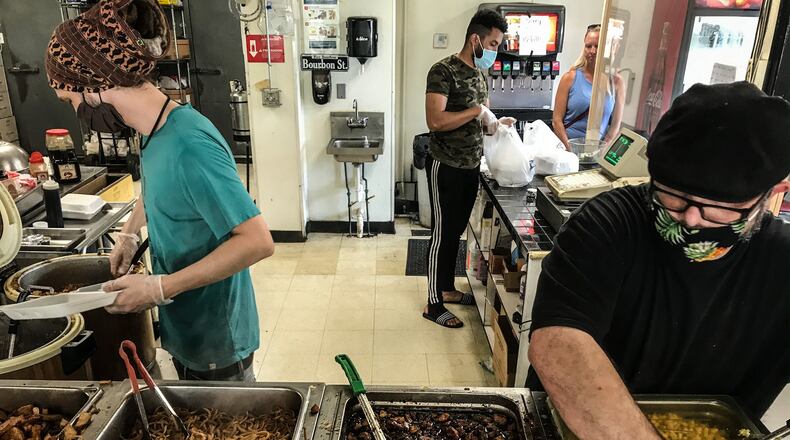Businesses across the country predict a dim hiring outlook for the second half of the year. Only 35% say they will increase employees in the latter half of 2020, according to a new survey conducted by The Harris Poll and commissioned by Express Employment Professionals.
A total of 42% of hiring decision-makers predict there will be no change in their business and 16% anticipate a decrease in employee count, the survey said. In the first half of the year, 31% of hiring decision-makers said their company planned to increase employees with 41% reporting no change and 26% decreasing staff.
Despite the dismal hiring outlook, Miami Valley employment agencies say they are having a hard time finding people to work during the coronavirus pandemic.
Ron Johnson, manager at the south Dayton Express Employment Professionals employment agency, said he is having trouble finding people who want to work.
“I am seeing that there’s a competition between working and the aggressive unemployment package that people are getting because of the coronavirus,” Johnson said.
The unemployment benefits that Ohioans can get from the state and the federal government have the potential to span nearly 100 weeks, if combined.
Ohio offers a maximum of 26 weeks regular unemployment benefits, followed by 13 weeks of federal PEUC benefits. Then the state’s newly announced extended benefits provide another 20 weeks.
At that point, the federal Pandemic Unemployment Assistance (PUA) program kicks in, which offers an additional 39 weeks. This is a total of 98 weeks of combined state and federal benefits.
There are nearly 137,000 jobs listed on the OhioMeansJobs.com job board as of July 5.
Johnson said he has about 20 openings right now, which is a high number for the small office.
“The market is slowly opening, but the problem for us is that it’s hard to find people right now,” he said.
Jeff Delk, the owner of the Express Employment Professionals offices in Beavercreek and Wilmington, said although some people don’t want to go back to work, his offices have seen an uptick in the last three weeks.
“There’s no question unemployment doesn’t give people an incentive to go back to work, but now we’re seeing businesses who want to move forward with hiring,” Delk said.
His offices have about 40 openings, which is high for right now, but would be on “the low side” in pre-pandemic times.
“Some people are being cautious, but I would would say more people than not are looking to hire,” Delk said. “There’s still a lot of unanswered questions about this virus but I’m seeing a fairly positive movement to hire. Money is flowing in the economy and that is good.”
Express CEO Bill Stoller said he sees signs of life in the workforce, which gives him hope that the worst is over.
“I am incredibly optimistic better days are ahead,” he said. “We are not out of the woods yet, and the sooner businesses implement measures to protect their workers, the sooner they can safely bring employees back to work, benefiting both American families and the economy.”
MORE: Federal, state jobless benefits could stretch 98 weeks in total
Total non-farm payroll employment in the U.S. rose by 4.8 million in June, and the unemployment rate declined to 11.1 percent, according to the U.S. Bureau of Labor Statistics.
Ohio’s unemployment rate was nearly 14% in May, rates among the highest the country has seen since the Great Depression.
The employment numbers were a reflection of economic activity resuming after being curtailed in March and April in the midst of the COVID-19 pandemic and efforts to contain it, the federal government said.
According to payroll company ADP, U.S. companies added nearly 2.4 million jobs in June. The large gain still leaves total employment far below its pre-pandemic levels. The economy still has 14.3 million fewer jobs than it did in February, before the viral outbreak intensified, ADP said.
ADP does not include government jobs in its report and often diverges from the Labor Department’s data.
About the Author

